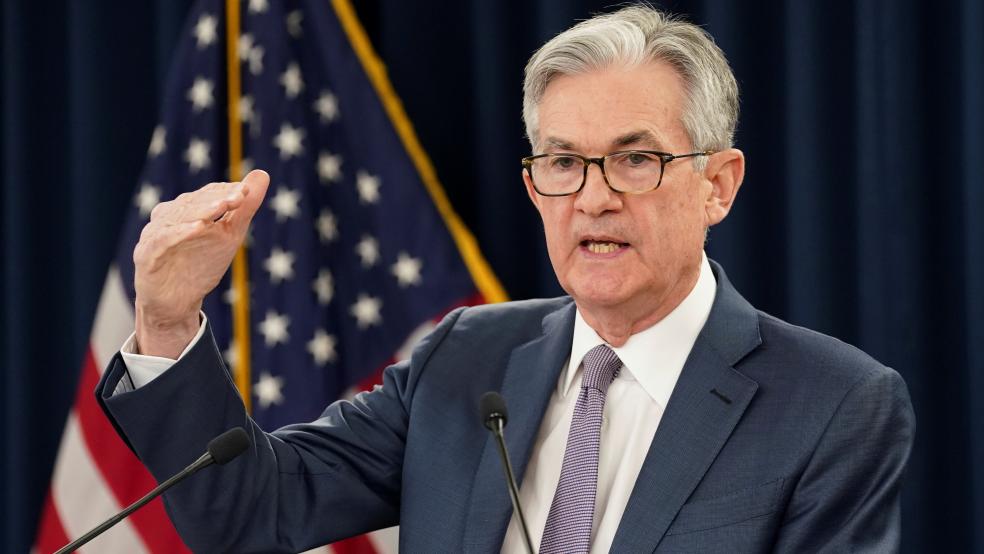The Federal Reserve on Wednesday raised its benchmark interest rate by 25 basis points, moving the federal funds rate to a target range of 5.25% to 5.5% – its highest level since 2001. The Fed has now raised rates 11 times since March 2022 by a total of 525 basis points as part of its campaign to bring inflation under control.
The move was widely expected. The big question now is whether the Fed is finished or will raise rates yet again at its next meeting in September. As in the past, Fed officials said they would allow the economic data to determine what they do next.
“The Committee will continue to assess additional information and its implications for monetary policy,” the Federal Open Market Committee said in a statement. “In determining the extent of additional policy firming that may be appropriate to return inflation to 2 percent over time, the Committee will take into account the cumulative tightening of monetary policy, the lags with which monetary policy affects economic activity and inflation, and economic and financial developments.”
Most analysts are betting that the Fed is done and that the benchmark rate has reached its peak. As of Wednesday afternoon, investors were saying they see a roughly 78% chance that the Fed will hold steady on rates at its next meeting, according to the CME Group’s FedWatch Tool, which measures market expectations.
Still, the Fed did leave the door open to another rate hike if conditions warrant, and some analysts have warned that it is too early to declare victory in the battle against inflation. Speaking to reporters after the announcement, Fed chair Jay Powell said that inflation is still “well above” the central bank’s 2% goal. “We can afford to be a little patient, as well as resolute, as we let this unfold,” he added. “We think we’re going to need to hold, certainly, policy at restrictive levels for some time, and we’d be prepared to raise further if we think that’s appropriate.”
Will the Fed go too far? There is growing confidence that the Fed can pull off the much-discussed soft landing of pushing inflation levels back down close to 2% without causing a recession. At the same time, there are also worries that the Fed could overdo it in its desire to be taken seriously and to ensure that the last embers of inflation have been extinguished.
“The improvement in inflation we have seen without a big increase in unemployment suggests that they may be able to get there with less pain than many thought,” said KPMG chief economist Diane Swonk. “The irony is that that sentiment actually increases the risks of an overshoot by the Fed.”
Some Democrats have been particularly vocal in their concerns. “The Fed’s extreme rate hikes risk throwing millions of Americans out of work,” said Sen. Elizabeth Warren. “Unemployment for Black workers is already rising at an alarming pace.”
Rep. Brendan Boyle, the senior Democrat on the House Budget Committee, also highlighted the risk that the Fed may be moving too aggressively. “Since 1961, the Fed has raised interest rates nine times to tame inflation – and ended up triggering a recession in eight of those nine cases,” he said in a statement. “Millions of jobs are on the line and this eleventh rate hike raises the risk of another over-correction. With the rate of inflation less than one point away from the Fed’s two percent target, our chief concern should be protecting American jobs and our historic recovery.”
Fed says no recession: Despite the concerns of some critics, Powell said that bank officials think the economy is strong enough to avoid a recession. "The staff now has a noticeable slowdown in growth starting later this year in the forecast, but given the resilience of the economy recently, they are no longer forecasting a recession," he said. That reverses a call Fed economists made in March, when, following a round of bank failures, they started to predict a recession to arrive later this year.
A new analysis from the Congressional Budget Office backs up the Fed’s outlook. CBO estimates that the economy will grow at a 0.4% annual rate in the last six months of 2023, with growth picking up in 2024. Inflation will continue to fall, dropping below 3% by the start of next year. Unemployment is projected to rise amid higher interest rates, with the unemployment rate peaking at a relatively modest 4.8% in the fourth quarter of 2023.




